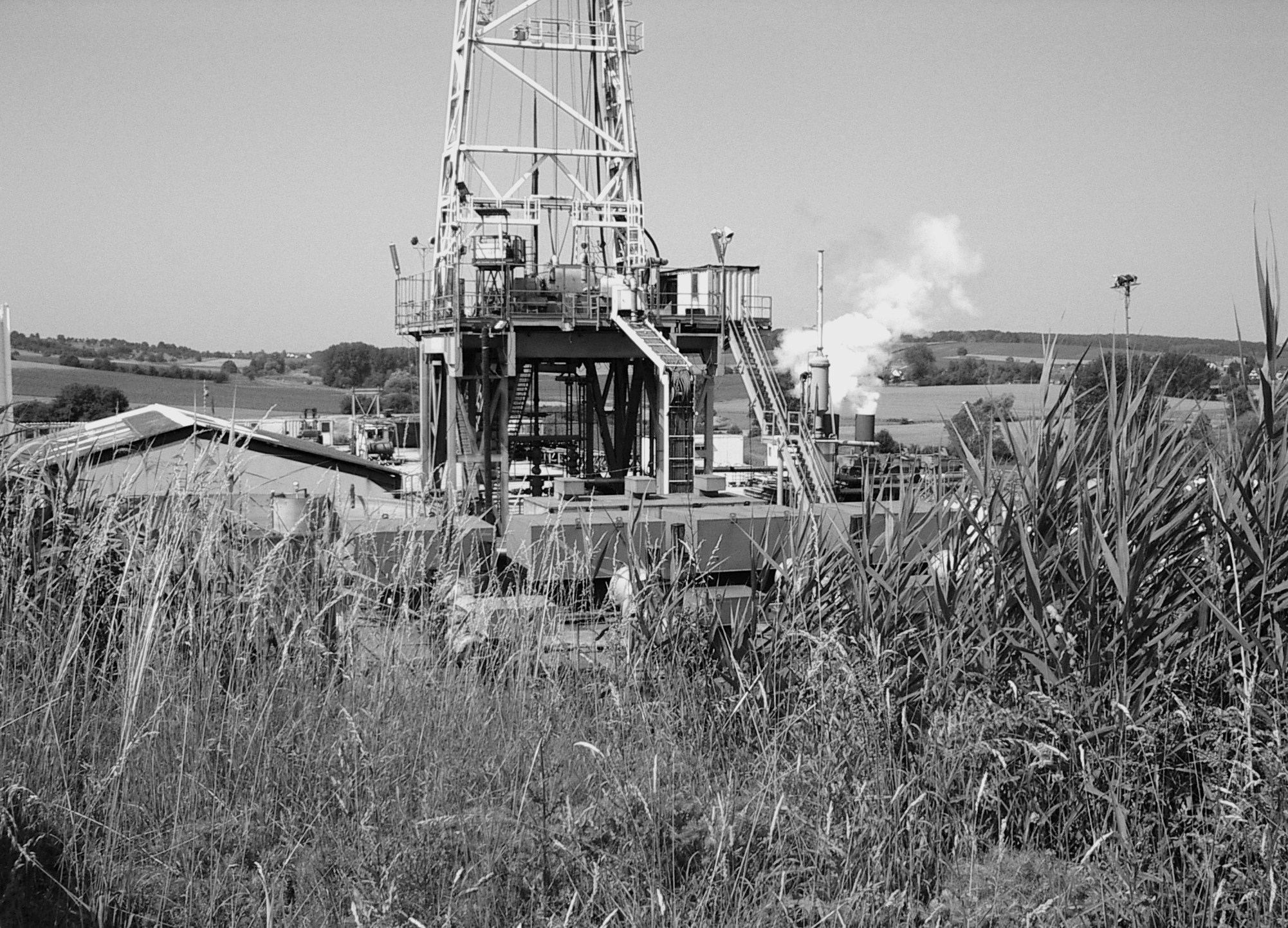Geothermal Energy from the Upper Rhine Graben
Milestones
 Soultz-sous-Forêts 2003. (BESTEC)
Soultz-sous-Forêts 2003. (BESTEC)
August 27, 1987
A team of French and German research institutes and companies signs the treaty of Kutzenhausen. The subject of the treaty is a joint geothermal energy research project in Soultz-sous-Forêts in northern Alsace. In search for alternatives to conventional forms of energy supply, geoscientists and engineers discovered a large heat reservoir in the underground of the Upper Rhine Graben. It is assumed that this region, in an area that runs from Worms to Strasburg, the underground is significantly hotter than anywhere else in Europe. Soultz, located at the center of the old oil field of Pechelbronn, was chosen as the project site, mainly because the upper layers of the location’s underground were relatively well known from previous surveying. Beginning in 1988, the research initiative is funded by France, Germany and the European Union. In 1990, British geoscientists enter the project. At this point, more than 20 research institutes are involved in the Soultz project. In the fall of 1990, the European Union commissions the French Socomine to take on the coordination and the on-site management of all research activities. In the summer of 1992, a consortium of small businesses, engineering consultants and research institutes is formed with the objective of assisting the coordinator Socomine in the increasingly difficult task of finalizing the prospecting of the Soultz underground.
December 1992
Steam fills the winter air above the big drilling rig in Soultz-sous-Forêts, our “Eifel Tower”, as locals call it lovingly. The drilling bit has advanced 3,600 meters deep into the underground, measuring a temperature of 160° Celsius. Geoscientists plan on extracting the local heat from hot and mostly dry rock with the help of subterranean water circulation in order to one day use it for commercial ends. At this point, said technology is still known as Hot Dry Rock or HDR technology.
November 21, 2007
In the Palatine city of Landau, Germany’s first commercial geothermal energy plant in the Megawatt range was officially put into operation by the prime minister of the state of Rhineland-Palatinate, Kurt Beck. This plant also operates on heat extracted from depths of 3,000 meters. For the first time, scientists were able to develop hot water reservoirs that are abundant and hot enough (160°C) to produce more than 3 MW of power (gross output). The integration of an injection well only became possible at the location in Landau after the well had been successfully improved.
June 13, 2008
Meanwhile, in Soultz-sous-Forêts, geoscientists advanced from 3,600 meters to 5,000 meters of depth. In this depth, three wells extract heat from 200 degree Celsius hot granite. This geothermal heat exchanger, artificially created and maintained by an injection well, extends over an area of 1.2 km in depths of 4,500 to 5,000 meters. Preliminary tests with steam developed into a highly modern research plant with an electrical gross output of approximately 2.1 MW. The French premier François Fillon and several other state officials attended the inauguration of the plant.
From 2008 to the present
Planning, construction and operation of a second geothermal energy plant in the megawatt range in Rhineland Palatinate, Germany. On November 13, 2012 the geothermal power plant in Insheim was formally put into operation by the minister for economic affairs for Rhineland-Palatinate Eveline Lemke.
